DIY welding kit simulates electronic candle lighting and blow control simulation teaching welding practice circuit board
$10.84 – $12.43
Description
- Hign-concerned Chemical: None
- Package: DIP
- is_customized: Yes
- Model Number: /
- Dissipation Power: /
- Supply Voltage: 5v
- Application: /
- Type: Voltage Regulator
- Brand Name: NoEnName_Null
- Origin: Mainland China
- Condition: New
- Operating Temperature: /
Product Description:
The simulated electronic candle has the simulation of "a match ignites a fire and the wind blows it out", and the design prototype is derived from real life plots. The circuit can be used for birthday parties after modification.
working principle:
CD4013 is a double D flip-flop, consisting of two identical, mutually independent data type flip-flops. Each flip-flop has independent data, set, reset, clock input and Q and reverse Q output. This device can be used As a shift register, and by connecting the Q output to the data input, it can be used as a counter and flip-flop. When triggered on the rising edge of the clock, the logic level signal added to the D input is sent to the Q output. Set and reset It has nothing to do with the clock, but is completed by the high level on the set or reset line respectively. This circuit uses one D flip-flop in the double D flip-flop 4013, connected into an RS flip-flop. After the power is turned on, R7 and C3 consist of The differential circuit generates a high-level differential pulse and adds it to the 1RD terminal of IC1 to force the circuit to reset. The 1Q terminal outputs a low level and sends it to the base of transistor V4. V4 cuts off the light-emitting diode D1 and does not emit light.
When using a lighter to burn the thermistor R2 (you can also use an infrared receiving diode instead of R2) (the burning time should not be too long, otherwise it will easily burn out the thermistor), the resistance of R2 suddenly becomes smaller, showing a low resistance state, and the transistor V1 is turned on, and the generated high-level pulse is sent to the 1SD terminal of 4013, causing the 1Q terminal to flip to a high level and sent to the base of the transistor V4. V4 is turned on and the light-emitting diode D1 emits light. This process is equivalent to using a match. Light the candle. At this time, even if the lighter leaves the thermistor R2, the circuit status will not change, and the light-emitting diode D1 will continue to glow.
When the electret microphone M1 is blown with the mouth, the audio signal output by the electret microphone M1 is sent to V2 for amplification by C2. The amplified signal drives V3 to conduct, and the pulse signal is output to the 1RD terminal of the 4013. The trigger resets, 1Q becomes low level, V4 is cut off, and D1 is extinguished, achieving the effect of wind blowing and fire extinguishing.

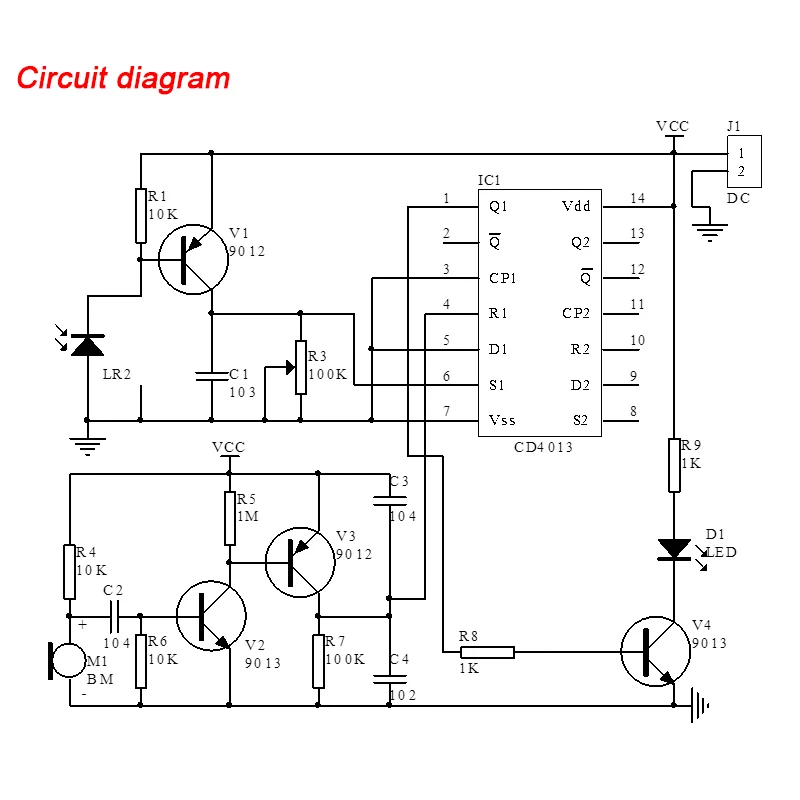
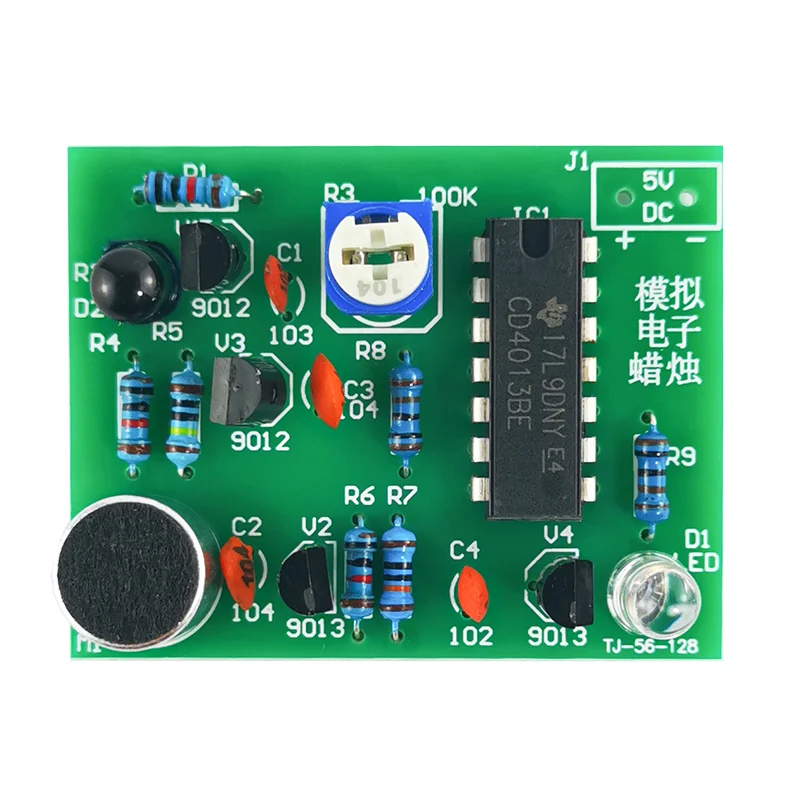
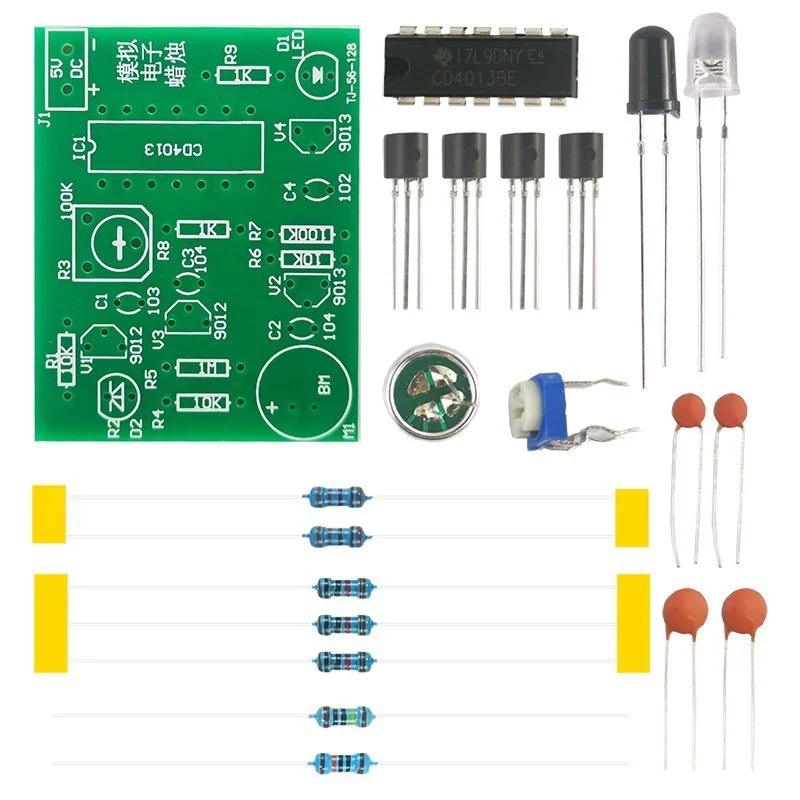
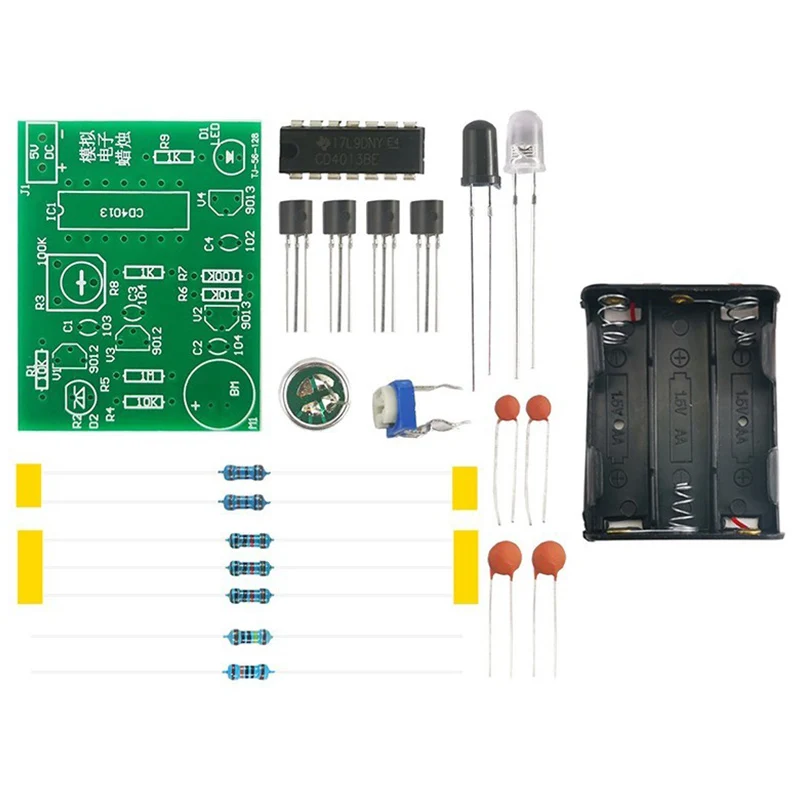
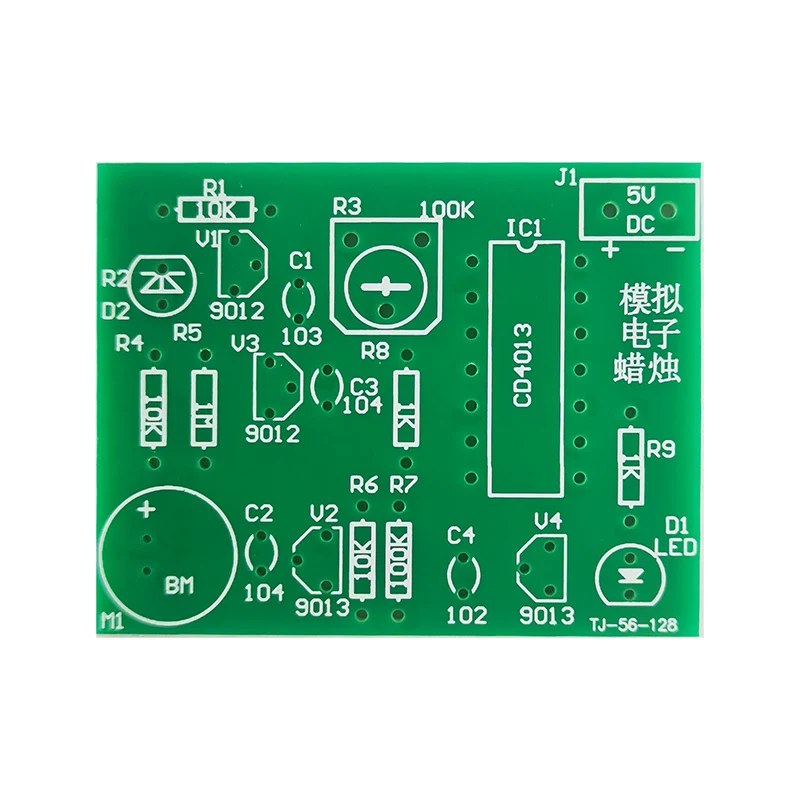














Reviews
There are no reviews yet.